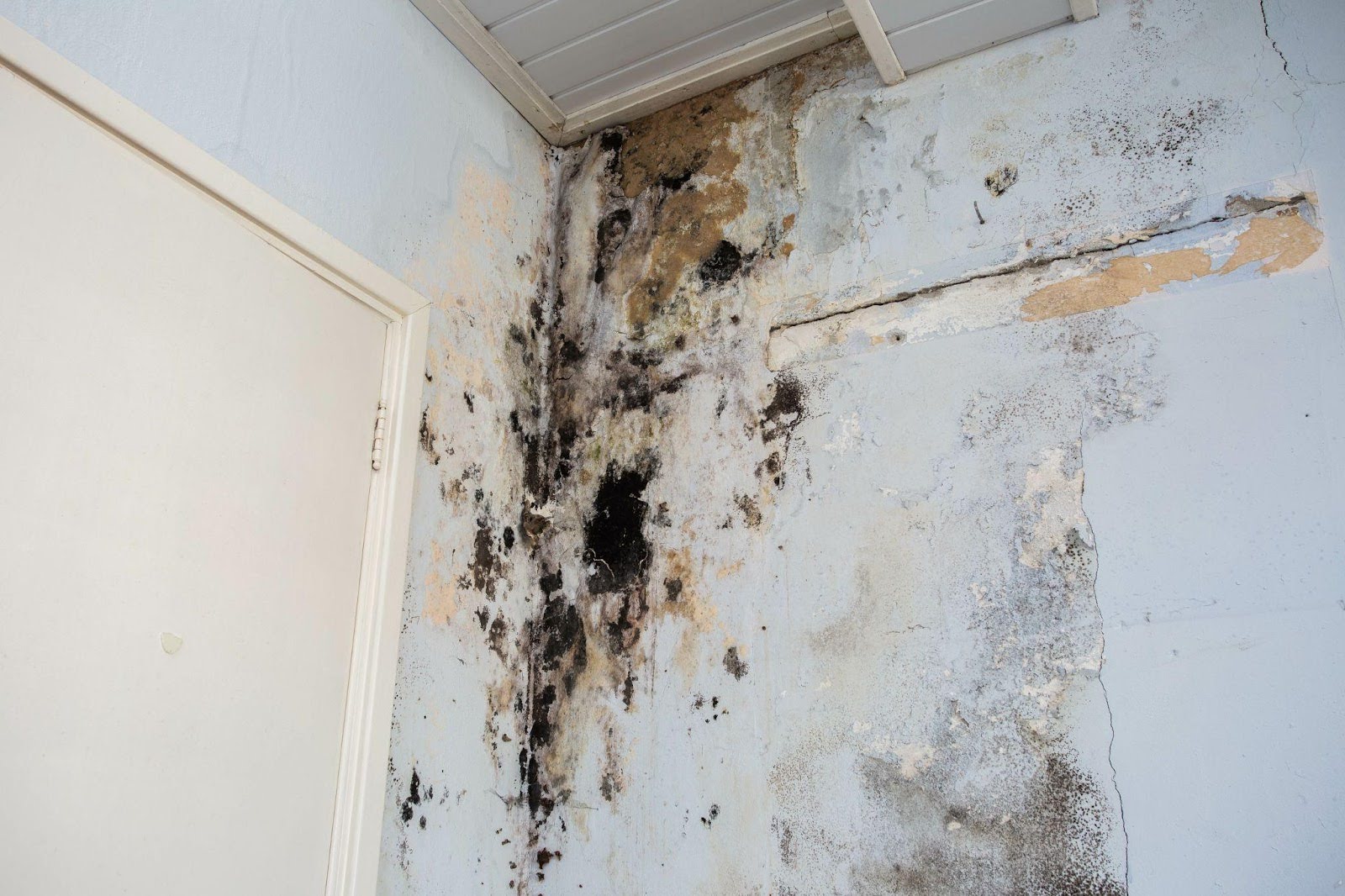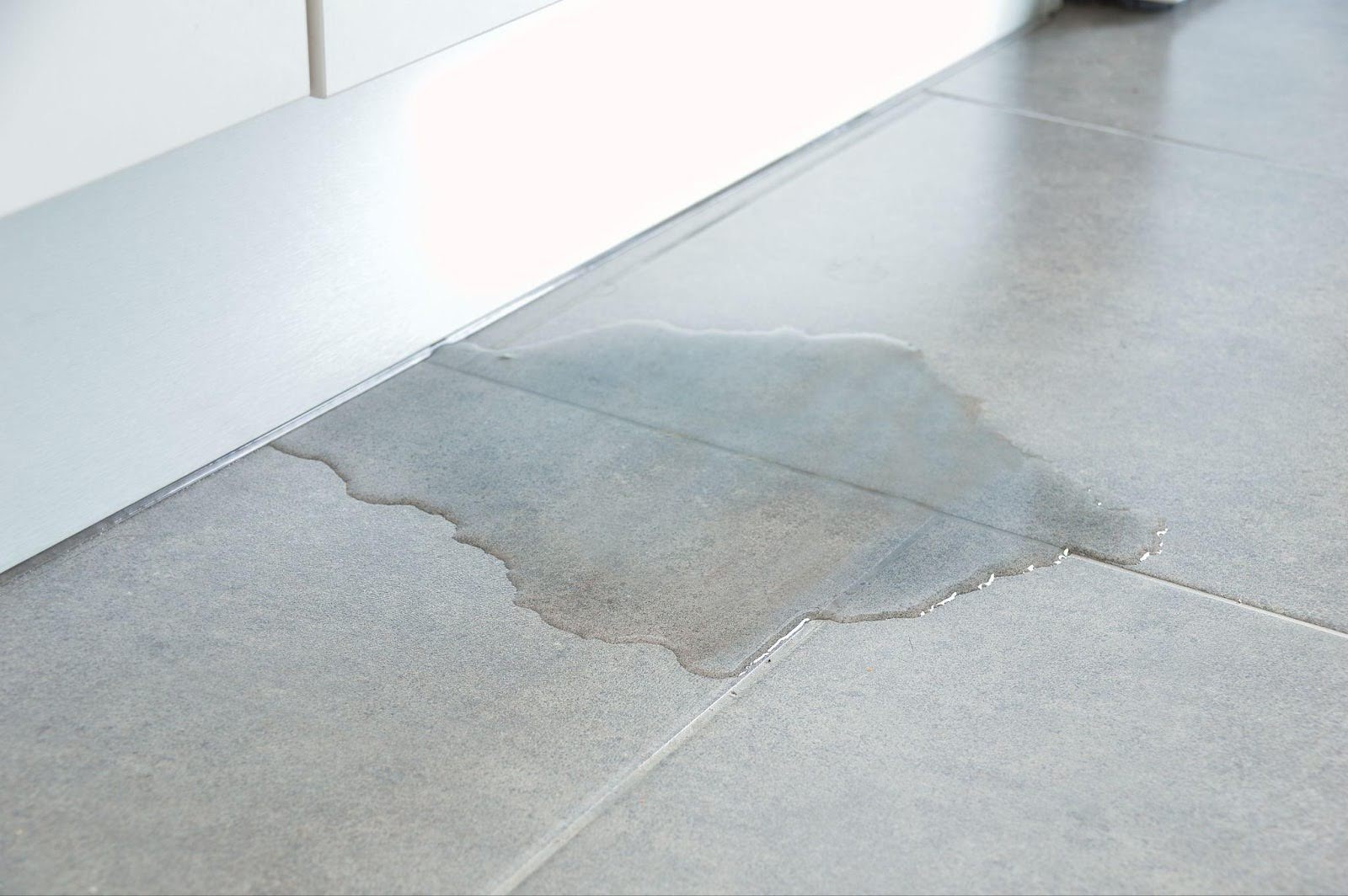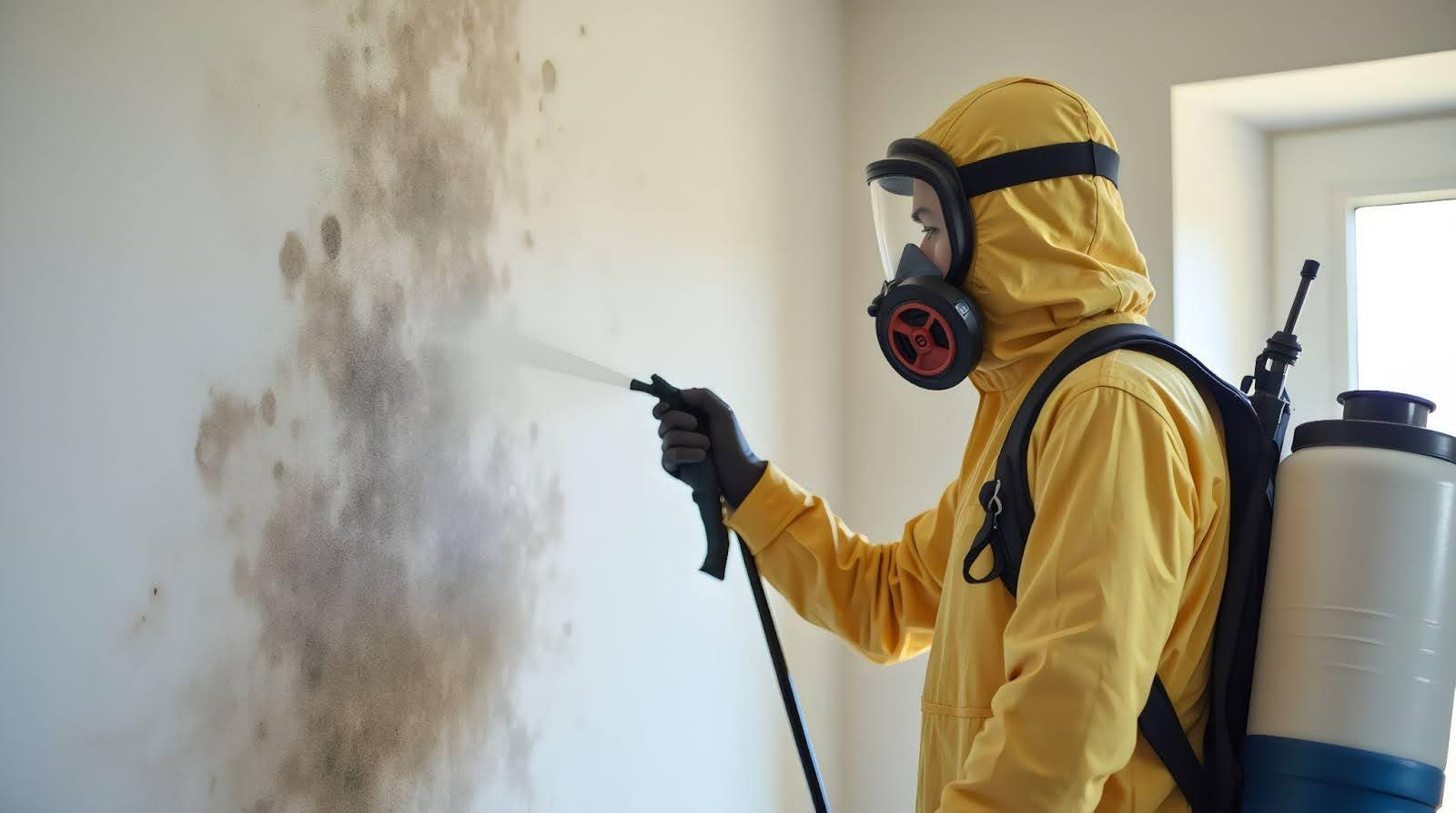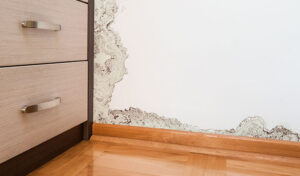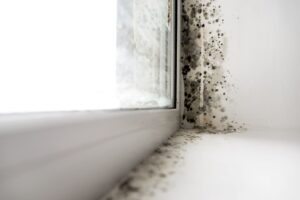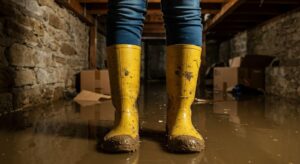Mold thrives in environments where moisture, warmth, and organic materials come together — mold restoration can restore your home.
Picture this: a leaky pipe under the kitchen sink or a damp basement corner where the air feels thick. These are ideal conditions for mold to flourish. Mold spores are constantly floating around in the air, and while they’re harmless in small amounts, they become a real threat when they land on a damp surface.
The moment spores find moisture, they latch on and start multiplying rapidly. Mold loves dark, humid spaces, so it often hides in bathrooms, attics, or behind walls where leaks go unnoticed.
It doesn’t take long for a small mold spot to become a serious problem, affecting your home’s structure and health. That’s why staying ahead of mold growth and keeping your home dry is crucial — it helps keep your living space safe and your loved ones healthy.
Now, let’s look at six tips for keeping mold at bay.
Tip #1: Control humidity levels
Keeping humidity levels under control is one of the most effective ways to prevent mold damage. Mold thrives in moist environments, and when humidity levels in your home are consistently above 50%, you’re creating a welcoming environment for mold spores to grow and spread.
Keeping the humidity between 30% and 50% makes it much harder for mold to take hold.
Excess moisture in the air can settle on surfaces like walls, ceilings, and floors, providing the dampness mold needs to thrive. Dehumidifiers can actively reduce excess humidity, especially in moisture-prone areas like basements or bathrooms.
Running air conditioners during warm months can also help keep the air dry and fresh. Additionally, humidity monitors can be a game-changer, giving you an easy way to track and maintain safe levels in your home.
Controlling humidity protects against mold and creates a healthier living space. It reduces allergens and makes your home feel more comfortable. It’s a simple but powerful way to keep mold at bay and safeguard your property.
Tip #2: Ensure proper ventilation
Proper ventilation helps prevent mold damage by controlling moisture levels in your home. Poor airflow can make areas like bathrooms, kitchens, and basements humid and stuffy — perfect conditions for mold growth. Proper ventilation removes moisture-laden air, reducing the risk of dampness settling on surfaces.
Using exhaust fans in high-moisture areas, such as bathrooms and kitchens, is essential. When you take a hot shower or cook a meal, steam and moisture build up quickly, and without an efficient way to vent it out, that moisture can seep into walls and crevices.
Running exhaust fans or opening windows allows the humid air to escape, keeping the space dry and mold-free.
Additionally, regularly opening windows to circulate fresh air throughout your home can make a big difference. This airflow prevents moisture from accumulating in one place and helps dry out areas that might otherwise stay damp. Good ventilation isn’t only about preventing mold — it also contributes to better indoor air quality and a healthier living environment.
Tip #3: Fix leaks immediately
Fixing leaks immediately is critical in preventing mold damage. Even small amounts of water create the ideal conditions for mold to grow. Mold spores only need a bit of moisture and 24 to 48 hours to start spreading.
When leaks in pipes, roofs, or windows go unnoticed or unfixed, they provide a constant water source, making it easy for mold to take hold and multiply.
For example, a dripping pipe under the sink or a leak in the roof that allows rainwater to seep in can lead to damp surfaces in hidden areas. These spaces often remain out of sight, allowing mold to spread undetected.
The longer the leak goes unresolved, the more moisture accumulates and the greater the risk of a widespread mold infestation that can cause structural damage and health issues.
By addressing leaks right away, you’re cutting off the moisture supply mold needs to survive. Quick action not only protects your home from mold damage but also saves you from expensive repairs and extensive remediation later on. It’s a proactive step that keeps your living environment safe and healthy.
Tip #4: Keep an eye on problem areas
Keeping an eye on problem areas is a proactive way to prevent mold damage. It allows you to catch moisture issues before they become serious.
Problem areas in your home, such as under sinks, around windows, or in basements, are particularly vulnerable to dampness and leaks. By regularly inspecting these spots, you can detect early signs of trouble, like condensation, water stains, or a musty smell.
When you check these areas frequently, you can address any issues, such as fixing a small leak or improving ventilation, before they escalate into a mold problem.
Simple measures like waterproofing your basement, sealing window frames, or adding caulk to areas where moisture could seep in can make a significant difference.
Mold prevention is all about staying one step ahead, and being vigilant with routine inspections ensures you can act swiftly when needed.
This ongoing awareness helps maintain a dry and healthy home, protects property from mold damage, and keeps your living space safe for you and your family.
Tip #5: Clean and dry wet areas quickly
Cleaning and drying wet areas quickly is essential for preventing mold damage. Mold only needs moisture, warmth, and a food source to start growing. When water sits on surfaces for more than 24-48 hours, it gives mold spores the perfect opportunity to take root and spread rapidly. This is why acting fast is so important.
Whether it’s a spill, a burst pipe, or water tracked in from outside, any damp area should be dried immediately. Wipe up standing water, use towels to soak up excess moisture, and turn on fans or dehumidifiers to speed up the drying process. Even small puddles on hard floors or dampness in carpets can become a breeding ground for mold if left untreated.
Bathrooms, kitchens, and laundry rooms are especially prone to wet spots, so keeping these areas clean and dry will significantly reduce the risk of mold growth. By making quick cleanup a habit, you’re eliminating the moisture mold needs to thrive and helping to maintain a healthy, mold-free home environment.
Tip #6: Use mold-resistant products
Using mold-resistant products is a smart way to prevent mold damage, especially in areas of your home prone to dampness and humidity. These specialized products, like mold-resistant drywall, paint, and insulation, are designed to inhibit mold growth by creating surfaces that mold has difficulty attaching to and thriving on.
For instance, mold-resistant drywall has a specially treated core and moisture-resistant paper that makes it less hospitable to mold spores compared to regular drywall.
Similarly, mold-resistant paint contains antimicrobial agents that protect surfaces from mold and mildew, making it an excellent choice for bathrooms, kitchens, or basements with high moisture levels.
By investing in these materials during renovations or construction, you’re adding an extra layer of defense against mold. They can save you time, money, and stress in the long run by reducing the likelihood of mold infestations and the need for costly remediation. It’s all about being proactive and building a home that’s better equipped to stay dry, safe, and healthy.
Call Total Flood & Fire Restoration for mold remediation services
If mold strikes, don’t wait for the damage to worsen or for your health to be put at risk. Trust the experts at Total Flood & Fire Restoration to provide thorough and effective mold remediation services.
Our team is trained to handle even the toughest mold infestations, using advanced techniques to restore your home and prevent future growth. Protect your property and your family — contact Total Flood & Fire Restoration today for a professional assessment and the peace of mind you deserve. Let us help you reclaim a safe, healthy living environment. Call us today at 385.503.2846 for your mold restoration needs.

